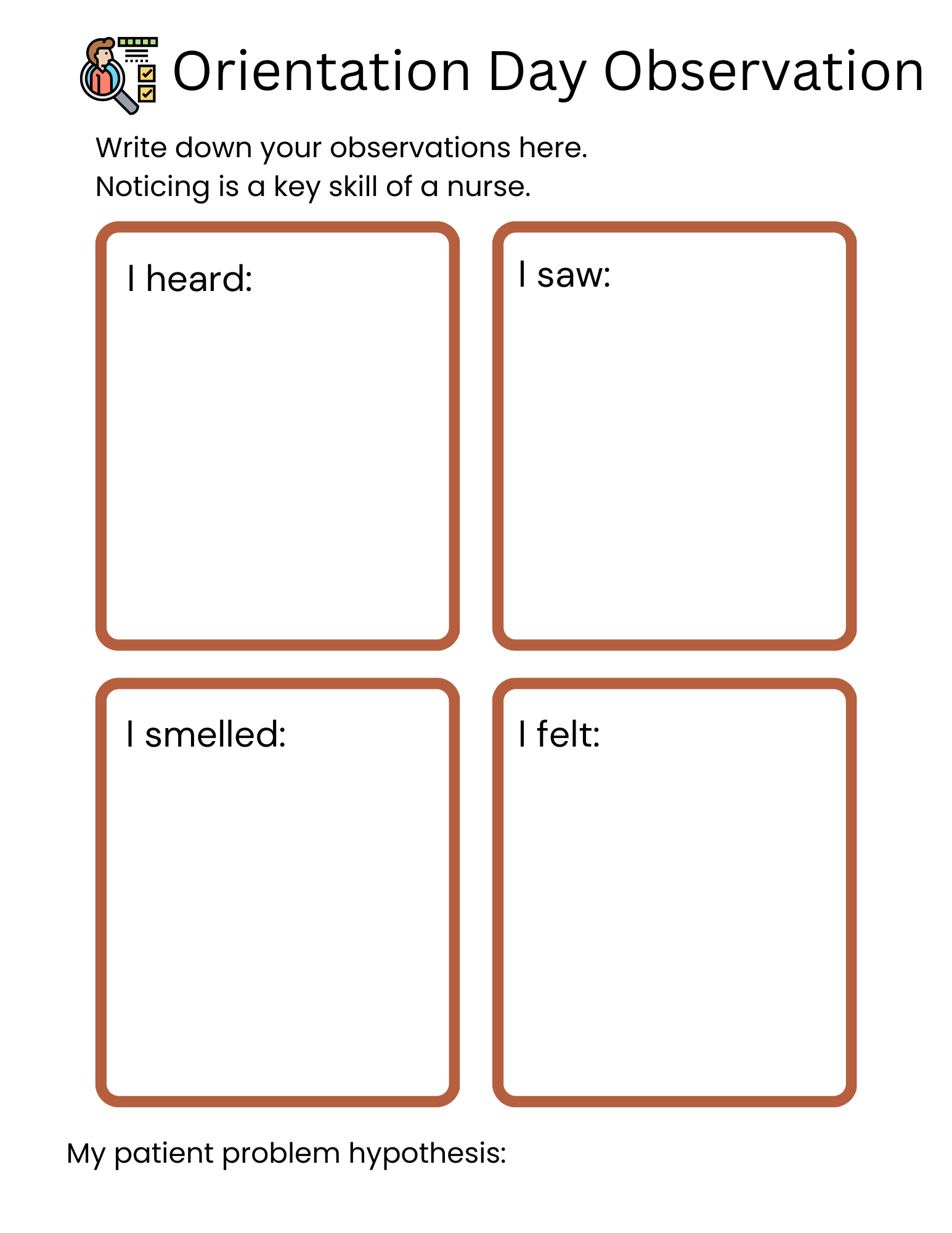Orchestrating Orientation Day: Two Active Learning Tactics for Nursing Instructors to use at Clinical Orientation
The first day of clinical orientation is pivotal for students and faculty. Students may feel anxious, uncertain, and intimidated by the new environment. At the same time, instructors struggle to deliver essential clinical information efficiently, establish a supportive learning environment, and grow meaningful connections with the students.
But, while getting to know the clinical paperwork and doing a walk-through of the unit are both important, we need fresh ideas to invigorate the orientation day and pave the way for a successful clinical experience.
This blog post will explore two innovative ideas to help nursing instructors conduct a stellar orientation day. They are also an active learning "warm-up," setting the tone for continued success using active learning techniques. Using one of these activities, you will see an increase in engagement and facilitate a sense of community right from the start.
Idea #1 - Orientation Day Chart Review
Best for: Helping students navigate the documentation system.
Beginner Students
Choose one patient from the unit. All student groups will be working on the same patient. Then, pair students together, and get them access to the EMR. Next, assign each group to research one section of the EMR. These sections may include:
Nursing vitals/assessment
Provider Notes
Diagnostics
Lab Values
Interdisciplinary Notes
Have each student pair dig deep into their section, finding small details or buried history. But be clear that they should not go into other students' sections.
When you come together as a large group, each group will present the information they found. Have students take notes within the clinical paperwork that your institution uses to get them familiar with where to put clinical data. Have them share (or show on the computer if you can) where they found the information in the EMR. Then, once you have done the data collection review, work together to map out a complete care plan, including a priority problem and pertinent nursing interventions.
Advanced Students:
Using the idea of a chart review, more advanced students who are comfortable navigating the EMR can develop compare/contrast chart reviews on orientation day. This activity is excellent for getting the clinical judgment wheels turning and offering a low-stakes activity as a warm-up for clinical.
Look for patients with similar medical diagnoses on the unit. For example, you will assign two patients with heart failure or two with bowel obstructions - if you can find three of a kind, even better!
Students can either work alone for this activity or in pairs. Ask them to complete the clinical prep for this patient as if they were getting ready for a clinical day. However, please give them a time limit, as this should be an abbreviated clinical prep. Then, pair up the students assigned the same type of patient. Ask them to find five similarities between their patients and five differences. These findings could be:
Patient presentation
Patient history
Social determinants of health
Lab values or diagnostics
Medications
Nursing interventions
Involvement of interdisciplinary team members
When you come back together as a large group, have students share their diagnosis and the five similarities and differences they found.
While great for orientation day, this could also be used as a clinical activity during low census or as a makeup assignment.
I’ve created a worksheet to guide student work on this activity. This is a template from Canva, so you can add it to your account and modify it to fit your needs.
Idea #2 - Orientation Day Observation
This activity gives students practice on the first step in clinical judgment - noticing.
Assign students one patient on the unit. Give them absolutely no information on the patient besides their name and birthdate. Instruct the students to enter the patient's room, introduce themselves, verify the patient's identity, and gather a set of vitals.
Note: Choose appropriate patients for this activity to avoid sending students into an unsafe situation. Please tell the students if there are any patient restrictions, such as no blood pressures on the left arm. That kind of information is great to share!
You can do the debriefing in one of two ways:
Do not tell the students the goal of this exercise. Just tell them that they are practicing gathering and documenting vital signs. When they leave the room, have them write down everything they noticed. Ask them to give their best-educated guess on what the patient's diagnosis is or what their primary problem is. After sharing this with you, ask them to review the patient's chart and see if they were correct.
Tell the students that you want them to discover the patient's diagnosis. Knowing the goal will heighten their observation skills, making them more aware of what they are looking for when they enter this activity. They will likely gather more relevant information. When they come out of the room, ask them to write down everything they noticed and see if they can determine the patient's diagnosis or primary problem. Then, they can review the EMR and see how close they were to the correct scenario.
It is up to you if students can use "interview" as one of their noticing skills. The activity will work either way, but students could ask about pain or difficulty breathing. You can limit what they ask or just see if they let the patient explain their diagnosis.
I have included a basic worksheet for this activity as well. Again, this is a template in Canva, so you can borrow it and change it if needed. Gathering assessment data is only one part of the “noticing” skill of a nurse, so be sure to review other ways to gather information (through interviews, the medical record, etc.).
So if you are looking for engaging, low-stakes tools to use during orientation day on a clinical unit, you now have a plan!
Benefits of a clinical orientation day activity
By implementing either of these strategies, instructors can foster a positive, exploratory learning environment that warms up the mental muscles needed for a successful clinical rotation. Including a large group debriefing after either of these activities can help to develop a sense of community and help learners get to know one another.
An interactive orientation day can set the tone for the entire clinical rotation and is an excellent opportunity for us as nursing educators to ease students' anxieties, introduce active learning concepts and cultivate an environment of inquiry and kindness.
Looking for more active learning ideas?
There are many more helpful, practical articles in the Idea Bank.
Ready to get moving with more active learning tools?
I have card decks and classroom kits that are ready-to-go active learning activities that you can implement right away. They are engaging, promote clinical judgment and entice discussion.


